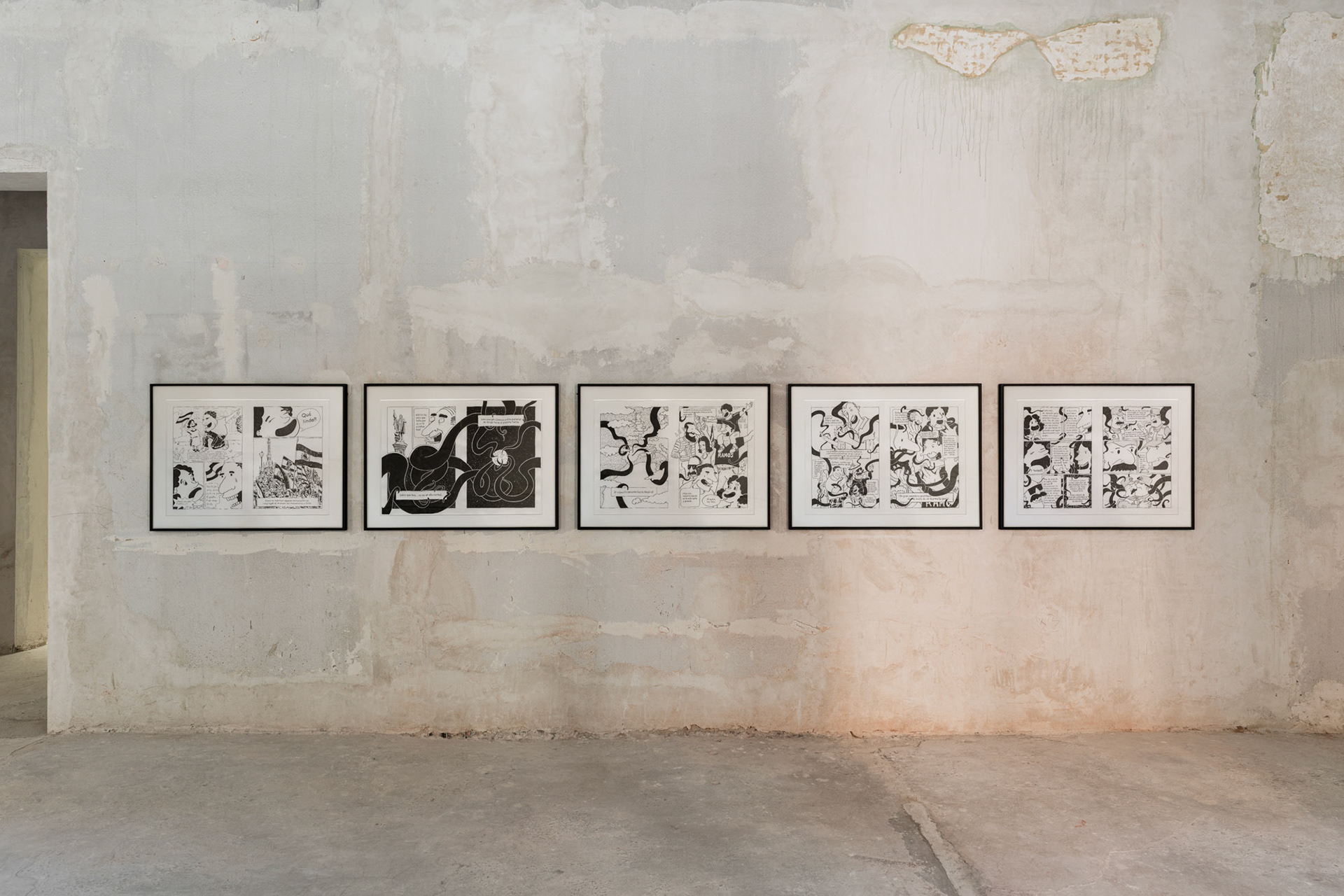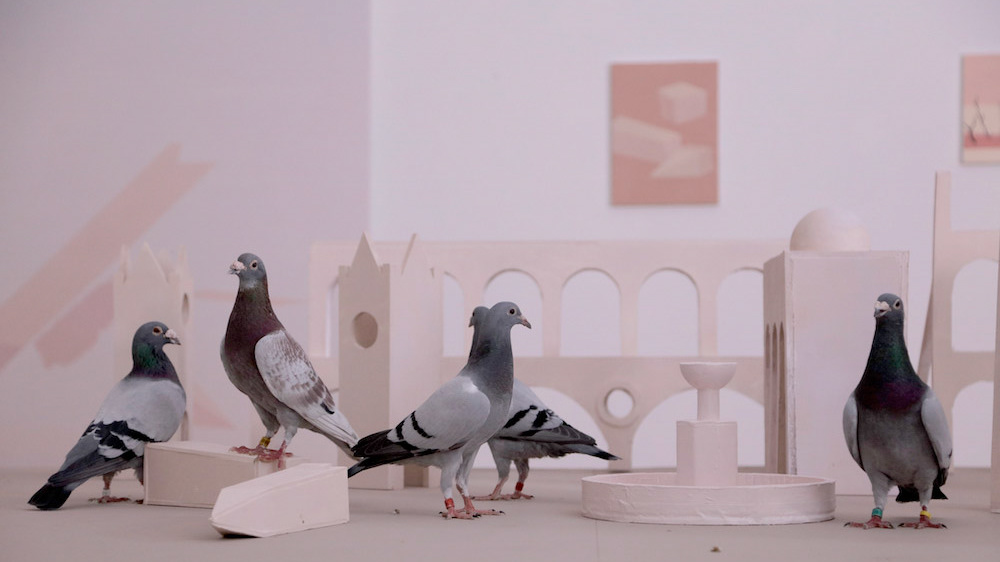With “Aliens en Madrid”, Colombian artist Ivan Argote brings together a group of works created specifically for his first solo exhibition at Albarran Bourdais gallery.
In this exhibition Argote generates critiques on the colonial tradition, creating passages full of meaning between fiction, intervention in public space, drawing, installation, sculpture and painting.
The games of utopian fictions are materialized in the public intervention and video “Paseo” where the statue of Christopher Columbus that crowns the homonymous square, is removed and driven in a truck through Madrid until it leaves the city. This performance on wheels puts in tangible terms the possibility of transforming the public space, leaving aside the traditional war and colonial tributes and also confronts the passerby with a kind of hyper realism of change ; perhaps something like this could happen, now or in the near future.
The intervention is accompanied by the “Bondage” series : small frescoes (oil paintings on pigmented cement) depicting the statue between canvases and ropes, lifted and carried. These paintings are a kind of story board of action that speak of the passage from fiction to tangible action in public space.
In the exhibition the viewer bumps into a large vegetal installation where the same statue is lying, now with signs of erosion, completely invaded by wild plants. Perhaps a few years further in the future. The plant installation shows the futility of our ideologies ; sooner or later nothing will remain but the ruins of our empires and cities, of pride and patriotism. The naive notion of enduring in time, of carving the world under our gaze is gradually erased by the voracity of plants.
The selection of plants obeys precise reasons : Some are native plants of the region, which NASA has included in exploration programs for the possible vegetation of Mars. Their particularity is to be able to transform as much CO2 into oxygen as possible. Others are plants brought to Europe that even today endanger local ecosystems. These plants are called “exotic” or “invasive” and are the result of colonization processes that have led to an exchange of plant species.
On the other hand, the work that titles the exhibition, “Aliens en Madrid” is a comic book of 20 drawings, which tells the fictitious story of the arrival of an alien energy to the Spanish capital, precisely on October 12, the day of the national holiday of Hispanidad, the date on which the arrival of Christopher Columbus in America in 1492 is celebrated. This controversial celebration has been transformed in most American countries in a date of recognition of indigenous people, providing a more critical view of the colonial history of the continent.
In the story “Aliens en Madrid” the “extramaterial” alien energy that arrives is a force of self-criticism, anti-colonialism, anti-patriarchy, love and tenderness that permeates the people celebrating in the streets. Through a grotesque and naive humor, Argote criticizes head-on the puerility of nationalism, the fervor of the homeland and the aggressive permanence of symbols that glorify colonization and domination. In parallel, this story shows how, after the alien arrival, many paradigms change simply through dialogue, self-criticism and affection.
The extraterrestrial iconography of the comic book “Aliens en Madrid” is taken up again in “Extramaterial Energy” : four acrylic paintings that also make a nod to Argote’s series of paintings “Mamarrachos”, in which black lines cross the canvas in a disorderly way, overflowing onto the wall. “Extramaterica” is a word invented by the artist who uses such neologisms to challenge linguistic categorizations and rigidities.
Within the story book “Aliens en Madrid”, once the Alien energy has impregnated the city, group dynamics begin to generate within which arises the initiative to create a political force called Alien Movement.
The works “Alien Power” are a series of bronze sculptures in the shape of supposedly alien hands. As described in the comic, these hands are the image and logo of the new political movement, symbols of difference, victory and peace. Argote plays here with cliché images of popular culture : How to represent what comes from outside ? How to represent the other ? Here, these mutant hands, symbol of diversity, are an extension of the dreamy fiction that takes on matter and gradually becomes reality.
The exhibition “Aliens en Madrid” presents a set of possible futures and demonstrates a certain ease of change. What we imagine can happen, it is enough to imagine sweeter, more playful and mutant futures.
To accompany this exhibition Javier Pérez Iglesias has written a fictional tale called “No hay ciencia sin ficción”






















